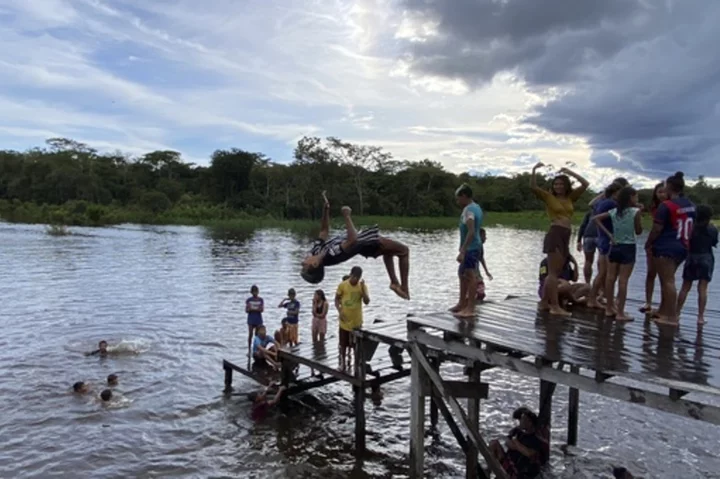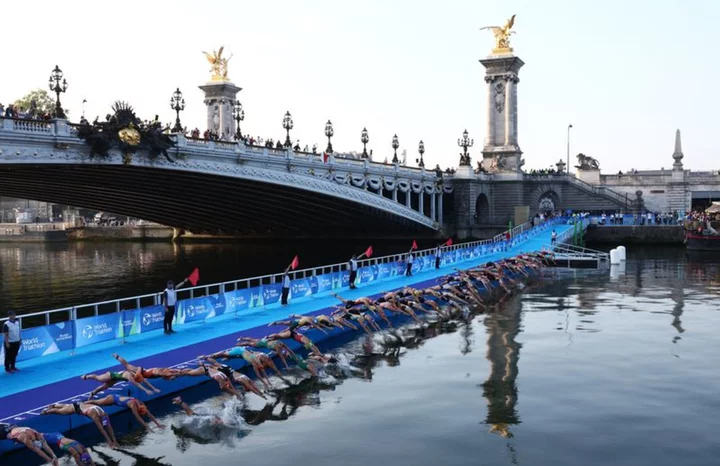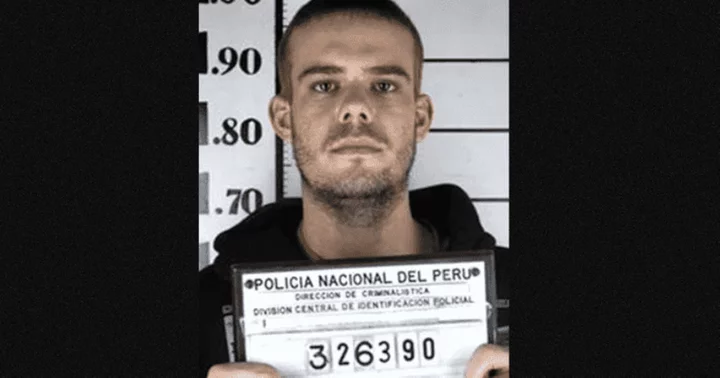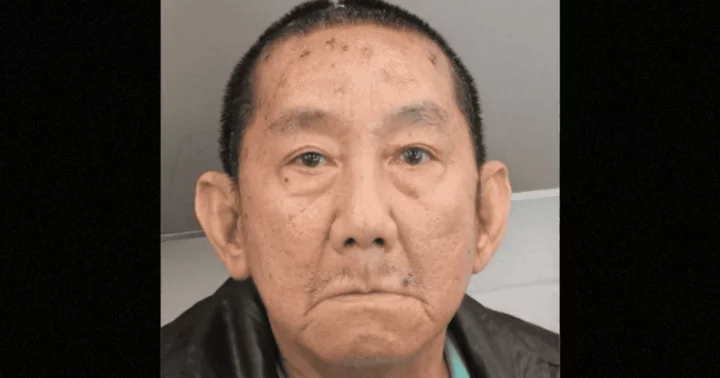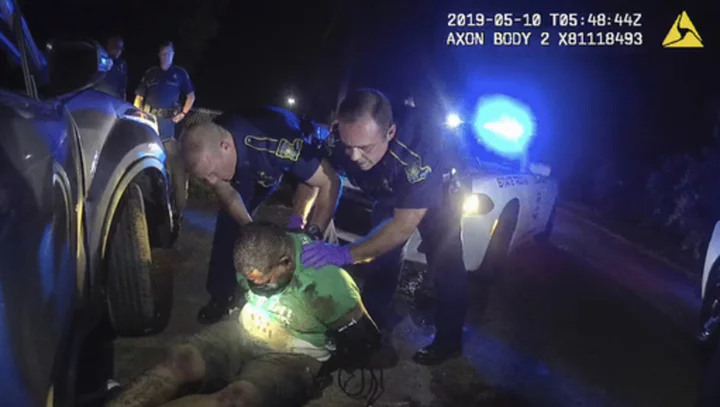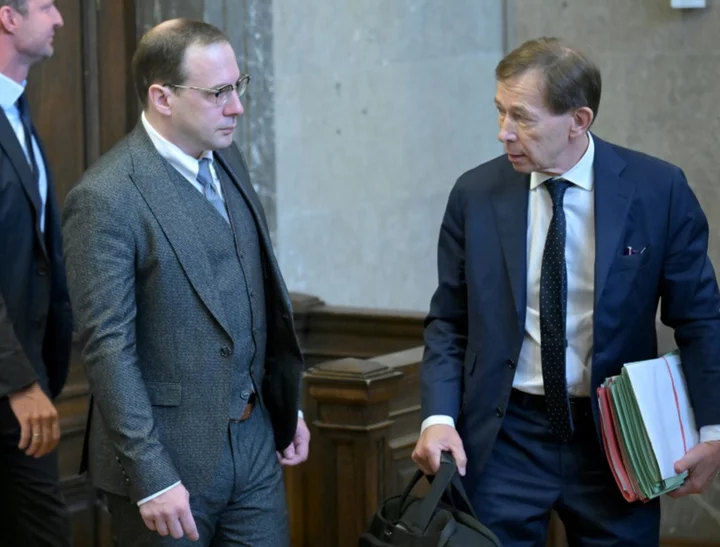ATALAIA DO NORTE, Brazil (AP) — In 1976, Binan Tuku ventured to meet a Brazilian government's expedition on the banks of the Itui River in a remote area of the western Amazon rainforest. After some initial suspicion, he and his father accepted machetes and soap in what was the beginning of the Matis tribe's contact with the non-Indigenous world.
Nearly 50 years later, Tuku's own son Tumi exists far from the village of his father, seeking to carve out a living in the impoverished city of Atalaia do Norte. Instead of the traditional blowgun, Tumi held a pastry bag in his hands while working in a bakery, and his face bore none of the tattoos or wooden piercings characteristic of the Matis.
“In the village, the quality of education is not as good as in the city,” said Tumi, 24, who said he hopes to go to college to study medicine or journalism. “I want to engage with non-Indigenous people, learn from the challenges I face, and perhaps one day return to my village to share my understanding of how the city functions with the elders.”
Thousands of Indigenous like Tumi are migrating to cities like Atalaia do Norte, some in pursuit of a better education than they can get in their village and some drawn by a federal welfare benefit that can wind up ensnaring them in urban poverty. In scenes repeated elsewhere in the Amazon, their exodus is leaving villages to wither. It’s also raising concern that the world’s largest tropical rainforest — crucial to stemming the worst of climate change — will be left without its most effective guardians.
About half of the 6,200 Indigenous people in the Javari Valley now live in urban centers, according to estimates by anthropologist Almério Alves Wadick. The Matis, one of several Indigenous peoples in the region, say almost half of their 600 people now live in that city.
That number is likely to grow, said Binin Matis, who leads the Matis Indigenous Association and takes the name of his people as his surname. Binin Matis said he fears profound consequences for his people, including the loss of language and involvement in illegal drugs.
“In the village, there are few people; it’s the older leaders. The youngsters are in the city,” he said. “No young Matis knows how to make a blowgun, an arrow. When the students go to the village for vacation, they don’t want to learn from the elders. They want to play soccer, have fun, and do things of the white man.”
Bushe Matis is president of Univaja, the main association for Indigenous peoples in the Javari Valley. He worries that shrinking population in Indigenous territories will lead to cuts in health and education programs, and even the potential revocation of Indigenous territories that might then be opened for mining and oil drilling.
The Amazon came under heavy pressure under far-right President Jair Bolsonaro, who sought legislation to open the rainforest to commercial agriculture and mining. Though Bolsonaro didn't get the legislation, his single term saw a surge in illegal mining and deforestation hit a 15-year high.
Univaja recently established its own surveillance team to guard against illegal fishermen, miners and loggers — a duty previously carried out by the villages. The initiative is crucial to protect isolated Indigenous who could be imperiled by something as simple as flu carried by invaders, Bushe said.
Such tension appears to be behind last year’s killings of Indigenous expert Bruno Pereira and British journalist Dom Phillips. Pereira, accompanied by Phillips, was in the Javari Valley assisting the creation of Univaja's surveillance system. Four fishermen and a businessman are under arrest in the killings.
Luiz Inácio Lula da Silva has sought to lessen pressure on the Amazon and its Indigenous since defeating Bolsonaro in last year's election. He established a Ministry of Indigenous Affairs in part to safeguard Indigenous communities. A crucial part of that is improving education, a significant challenge in remote areas of the Amazon.
Indigenous families also face hostility from non-Indigenous residents who see them as competition for limited resources. Most of the Atalaia do Norte municipality lies in Indigenous territory that is off-limits to non-Indigenous anglers. But those anglers complain that the Indigenous living in the city mainly fish in the non-Indigenous areas.
“The Indians come here, the government doesn’t give them food, and they fish on our side,” said fisherman Antonio Alves, 46. “When one of us mistreats someone, it’s for our survival.”
The Indigenous migration is being driven in part by a federal program created 20 years ago in Lula's first term. The Bolsa Familia program — in English, “Family Allowance” — was launched to provide cash to families if they immunize their children and keep them in school. Tens of thousands of Indigenous families started frequenting cities to withdraw the benefit from state bank branches, including nearly 900 in the Javari Valley.
There were dire consequences.
Indigenous people unaccustomed to handling money can be preyed upon, paying more than they should for long boat trips or having their debit cards illegally retained by unscrupulous merchants as collateral for installment or credit purchases. In the city, they stay in precarious conditions, vulnerable to alcohol and disease. Often, the Bolsa Familia payout isn't enough to cover fuel to get back home.
“They conclude that it’s better to stay in the city, receiving this amount and putting it towards studying since there isn’t even a complete primary education in the village,” said Wadick, the anthropologist. Indigenous leaders say village schools are in shambles from poor maintenance and lack of oversight by local and state governments. And many Indigenous teachers have been spending long periods in the city, neglecting their work.
But the money isn't enough to cover life in the city, either. The minimum payment is $125 per month, plus small additions for pregnant women and for children depending on age. Indigenous people often compete against each other for poorly paying jobs like collecting garbage or sweeping streets. Many endure hunger.
“We need clothing, to eat every day, to pay for electricity, and water bills. If all of that were free, we could sustain ourselves with $125,” said Tumi, who recently left the bakery to work for Univaja.
The Ministry of Indigenous Peoples is seeking to rework parts of the Bolsa Familia program to reduce the frequency and duration of Indigenous trips to cities to collect payment. Proposals include extending the withdrawal period for the money, flexible payment dates, and a less bureaucratic service with translation into Indigenous languages.
Another major goal for the ministry is to improve education in Indigenous territories to reduce the incentive to leave. That's a daunting task with high costs for huge, remote and impoverished areas.
Nelly Marubo, an anthropologist who is Indigenous, said Indigenous people who come to Atalaia do Norte for a better education can be disappointed by what they find. The municipality ranks poorly in areas like literacy, standard of living and health, and unemployment is as high as 93%.
Her ideal is a culturally adapted school in the village where students could have access to both Indigenous and non-Indigenous knowledge without needing to be in the city.
Marubo said she was shocked by what she found when, after a five-year absence, she recently visited her native region deep in the Javari Valley to film a documentary about her life.
“I always have in my mind lots of children and young people, but unfortunately, this time the visit was very sad," she said. "I found an abandoned village with only four elderly women.”
___
Associated Press climate and environmental coverage receives support from several private foundations. See more about AP’s climate initiative here. The AP is solely responsible for all content.

